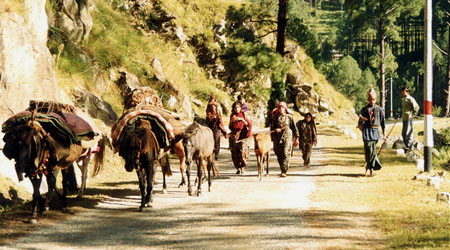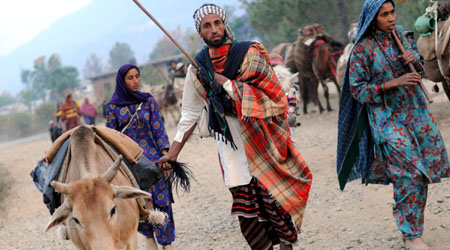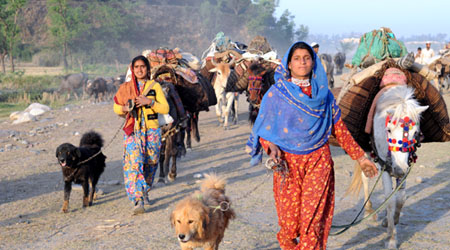
Transhumance, the seasonal herding of livestock between pastures, is a nomadic practice that forms the foundation of the Van Gujjars’ customary livelihoods and allows the forests to re-generate.
For the majority of Van Gujjars, life is characterised by the bi-annual, transhumant migration between the forests of the Himalayan foothills and plains and those of the highlands. The community migrates in groups of several families who are tied through relations of kinship and friendship. The six-month summer period is spent in the pastures of the highland meadows and forests. As the summer wanes, the Van Gujjars and their buffalo make their month long descent, following well-trod paths. During the six-months of winter the Van Gujjars dwell within the lowland forests. Upon returning to the same forest sites, the Van Gujjars either re-construct their homes out of locally sourced materials, or re-occupies last year’s abodes. Through migration the Van Gujjars partake in the seasonal cycles of the land, simultaneously accessing new sources of fodder and permitting the used forests to re-generate.



Due to State pressure to settle, restrictions placed upon the community’s access to the forests, and a lack of financial means, some Van Gujjars are no longer transhumant. Several families opt for some members to remain in the lowlands whilst others make the journey of transhumance with their buffalo. In additiona, a collection of families has been coerced by the state to settle into the colonies of Pathri and Gandikhata.